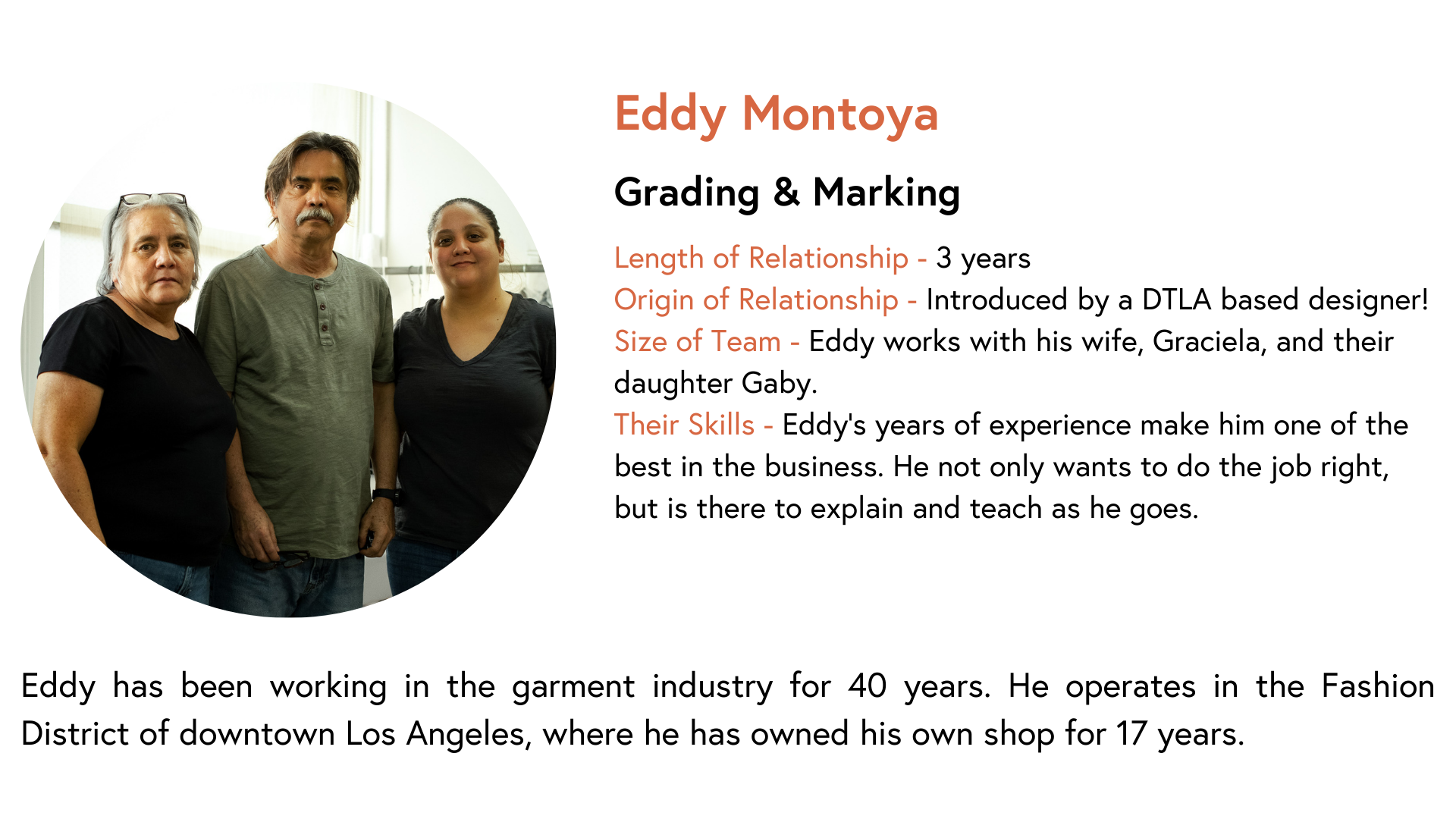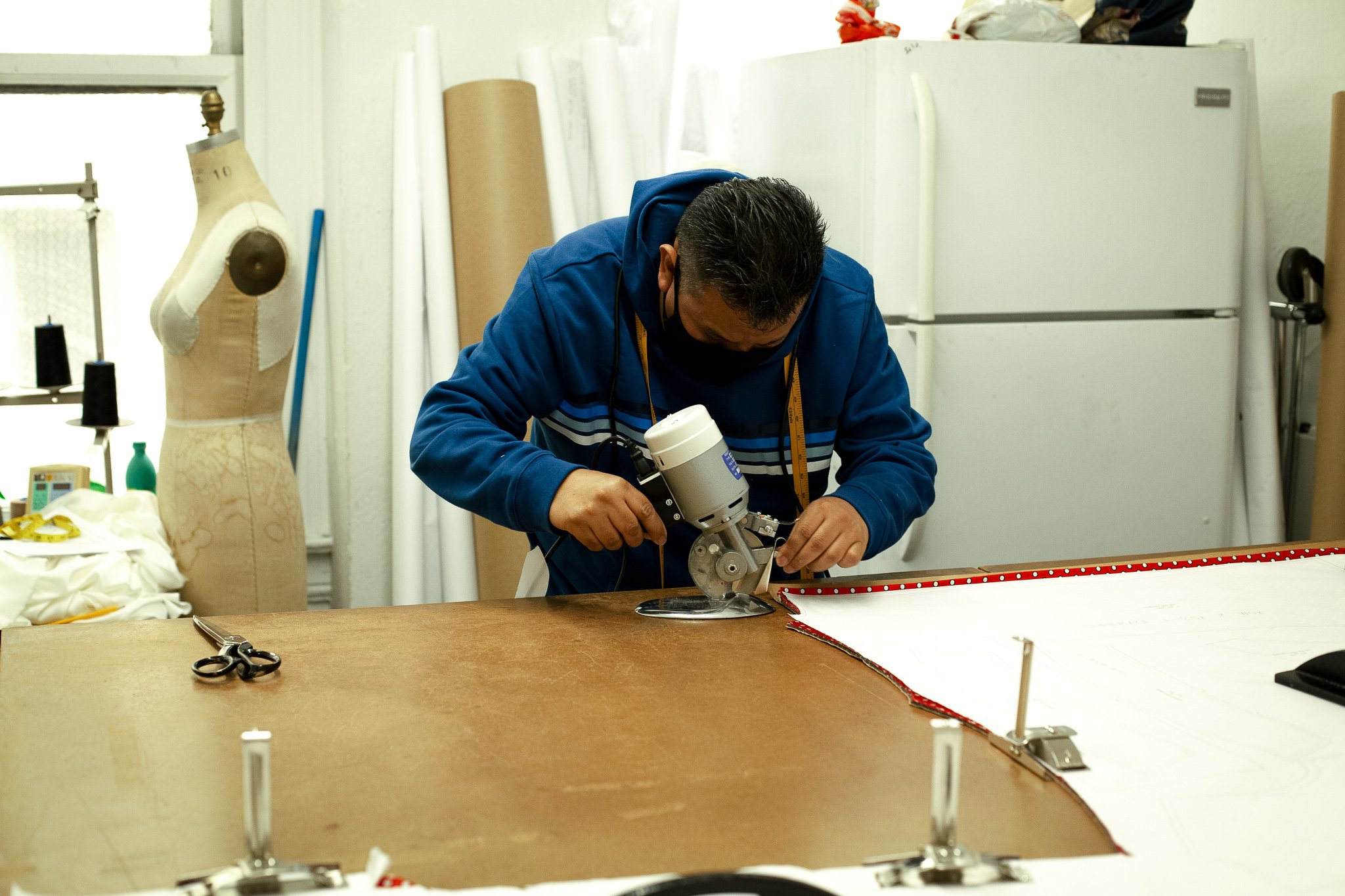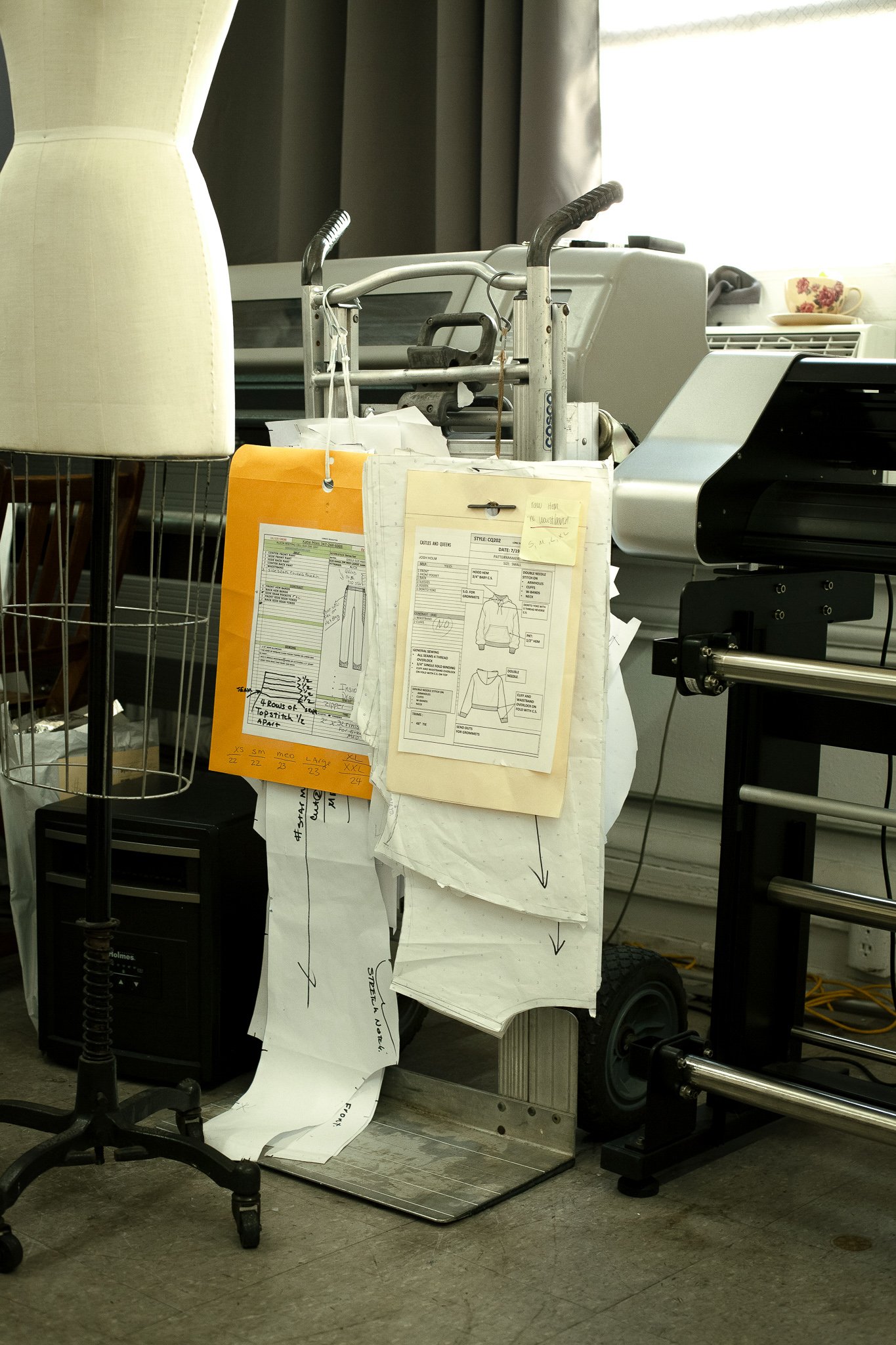Eddy Montoya grading a pattern.
What is Marking?
Marking is planning the optimal arrangement of pattern pieces to minimize material waste.
Markers have to consider more than just spacing. Marking involves careful attention to all aspects of the material too, like the shrinkage and width of the fabric. This ensures that when the pieces are cut and sewn everything fits together just right.
What is Grading?
Grading is the process of expanding a base pattern into smaller or larger sized garments.
Creating sizes is more nuanced than you might think. The pattern has to be adjusted to maintain proportionality as you increase or decrease in size. Grading creates sizes through proportional formulas, which ensures that the garment has the same shape and fit in all sizes.
what about pattern alterations?
Grading is different than altering a pattern. Altering a pattern is a similar process, but changes aspects of a pattern without numeric proportionality. This process does not create the same garment in a larger or smaller size, but creates a new pattern in a more customized size.
For example, you might expand the waist or bust measurement of a garment, but keep the sleeve length or shoulder width the same.
You can read about the History of Standardized Sizing on our Digital Zine: Extra Measures!
Who grades for Rule DD?
Meet Eddy mONTOYA AND HIS FAMILY.
We’ve hand-picked some of the most skilled and collaborative partners in the Los Angeles area to support our team. Working directly with our tight-knit network ensures that our contractors are properly respected, and maintains an inherent level of sustainability.
























